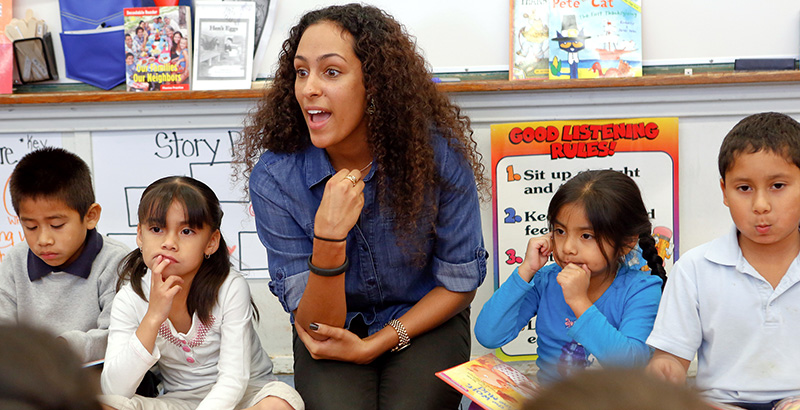Thomases: What Makes a Great School? When the Adults Are Allowed to Learn, Try, Make Mistakes — and Then Try Again

Effectively supporting human learning is both profoundly simple and maddeningly complex. Schools, designed hundreds of years ago to formalize learning for children, have done much good and much harm, as anyone will tell you — we all loved school, hated school, transformed our lives, and were bored to tears.
In our efforts to ensure our education systems are effective, we have built systems upon systems of state and local monitoring for students, teachers, and schools. These are important measures that allow us to study and understand why some schools are doing better than others.
But for me, the most critical measure is whether the school itself is a learning organization: Do the adults ask questions they don’t know the answer to — questions with no obvious solution, questions that will strengthen individuals, groups, and the school more broadly simply through the act of answering? And then, do they work hard to develop and test answers to those questions?
I have spent 25 years in and around schools. I started my career in education as a teacher at a school I helped found, El Puente Academy for Peace and Justice in Brooklyn. I oversaw the opening of more than 350 district and charter schools for the New York City Department of Education and led the work around preparation for the Common Core and college/career readiness for the district. I’ve been in hundreds of schools, and in my experience, our ability to learn is essential to our ability to grow — for adults and children alike.
Questions like these are what matters:
Between teachers and students:
“What is an inference? How can you have enough evidence to be confident in your answer?”
“Did we work together well as a group? What could we do better?”
“Who really won independence during the American Revolution?”
Among school staff:
“What did my students actually learn from that lesson? How do I know?”
“What are we doing to ensure that all children sees themselves as potential mathematicians, writers, thinkers, and leaders?”
Whenever I visit schools and meet with teachers, leaders, and students, I am amazed by two contending realities. First, the sheer intensity of effort involved in enabling a school to function is far beyond anything noneducators understand: the commitment, the constant problem-solving, and the attention to the tiniest detail amid what can sometimes feel like a maelstrom of human development. Second, so much is not going the way anyone wants: a student comes in upset or homeless, a lesson plan collapses, an assessment suggests the kids didn’t learn.
The challenge of effective schools is how to take the first two realities and build toward a third: a powerful engine of innovation that ensures the adults are improving their practices so student learning deepens. Teaching is a science — we know an enormous amount about how students learn and what sets up classrooms for success. And, teaching is an art — those countless classroom moments when a child surfaces an idea and the teacher uses that idea to create new possibilities, address confusion, and explore deeper understanding.
Effective schools have a set of effective practices in common, including well-thought-through answers to curriculum, pedagogy, child development, school culture, and data. Leadership matters profoundly — at the teacher, administrator, and principal levels. This is true in the best schools we opened, both charter and district. And it is true in the schools that have tackled preparing their students to be full participants in the economic, political, and social world of the 21st century.
But the special sauce — that separates the good schools from the great schools — has to do with how the adults learn, try, make mistakes, and try again. Call it rapid-cycle innovation, design thinking, or a learning organization. It is educators learning in real time. The depth and breadth of adult learning can be seen clearly in the extent to which the school expands student learning and helps children realize their fullest potential.
Get stories like these delivered straight to your inbox. Sign up for The 74 Newsletter

;)